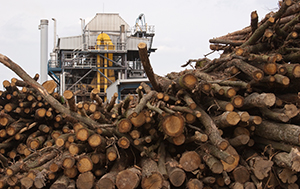BioGrace-II Project Background
Achieve harmonisation
The overall motivation to start this project was the observation that sustainability criteria for electricity, heat and cooling from solid and gaseous biomass were not yet harmonised. In January 2010, the European Commission published report COM(2010)11 in which it did not propose binding sustainability criteria at EU level as it was the case for biofuels and bioliquids where such criteria were made obligatory by the Renewable Energy Directive (2009/28/EC; RED) and the amendment of the Fuel Quality Directive (2009/30/EC; FQD). Instead, the Commission made recommendations to Member States that were planning to introduce sustainability criteria for solid and gaseous biomass used in electricity, heating and cooling. These recommendations should ensure that sustainability criteria were harmonised between member states and were in line with the methodology as laid down in the RED. This would ensure greater consistency and avoid unwarranted discrimination in the use of raw materials.
Enhance understanding of methodology
For electricity and heat from biomass, some national calculations tools for GHG calculations had been developed (Belgium, Germany, the Netherlands, and UK) but a discussion on harmonisation of these tools was not yet started. Part of such a harmonisation should be a discussion on the methodology of making GHG calculations for solid and gaseous biomass. The report COM(2010)11 gave guidance for the GHG-methodology and presented default values for the GHG-savings for various biomass pathways. This information was however not as easy to use as the information in the RED, e.g. there were no disaggregated default values and the conversion technology used was not specified. This project played an important role in improving the suitability of the information in this communication.
The important user needs and market barriers that were tackled by this project were:
- Trading barriers
When a minimum GHG saving has to be proven, different GHG calculation methods in member states lead to restrictions for biomass trade across borders. It will lead to additional administrative costs (e.g. double GHG calculations and verifications). It can be a barrier for the development of large biomass supply chains for biomass coming from outside of the EU.
- Verification problems by auditors
Auditors reported that GHG-saving calculations are often difficult to verify. This is caused by the complexity of the matter plus the large number of data that has to be checked in combination with the different reporting structures that are being used.
- Level playing field between member states
Different GHG methodology and different input values could lead to an artificial variation on GHG performance between member states, thus limiting the establishment of a level playing field between member states.
The project BioGrace-II built upon the earlier (2010-2012) IEE-project BioGrace which harmonised GHG calculations for biofuels for transport.


